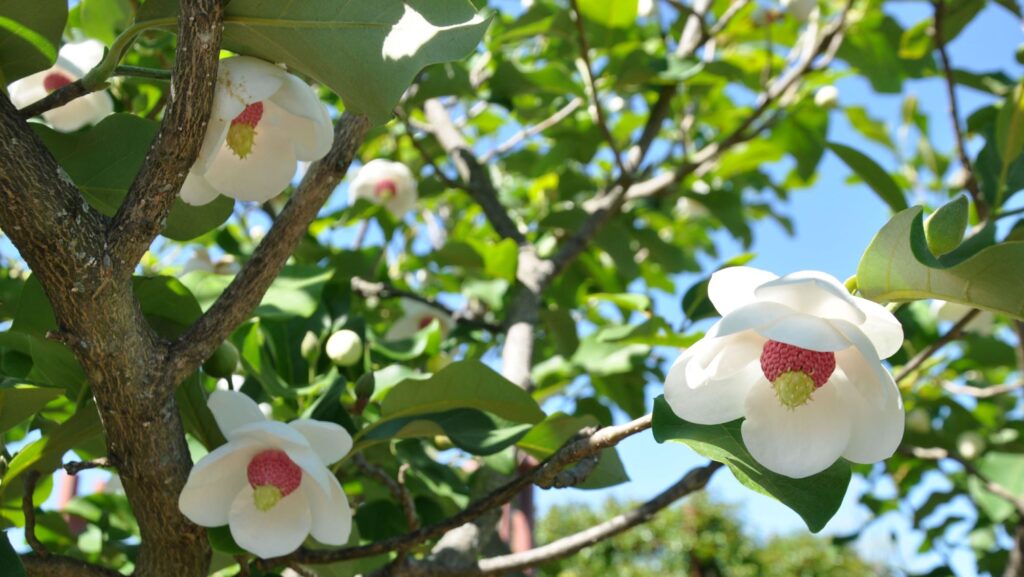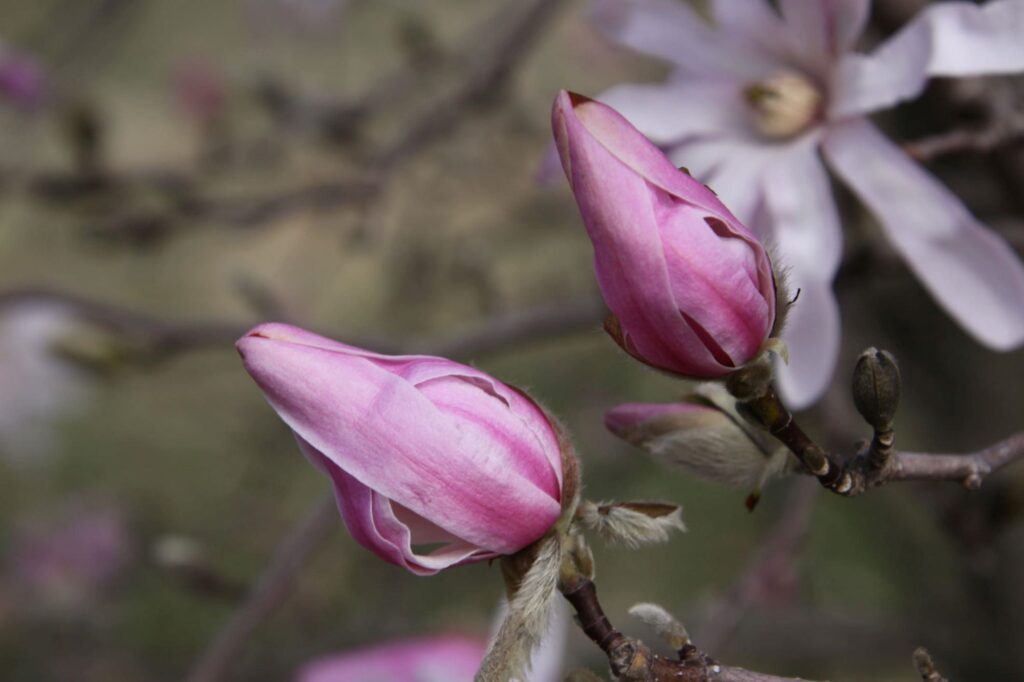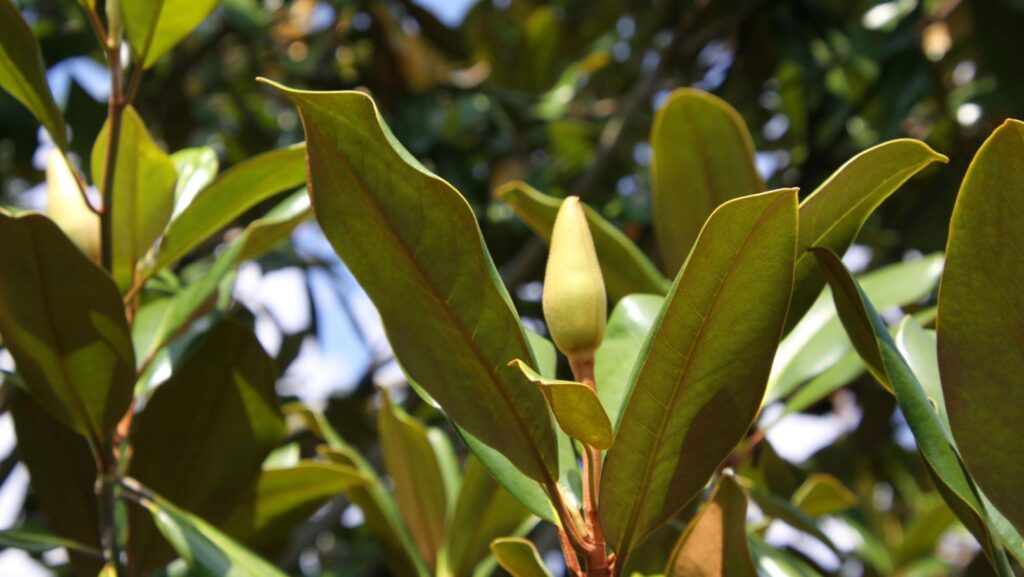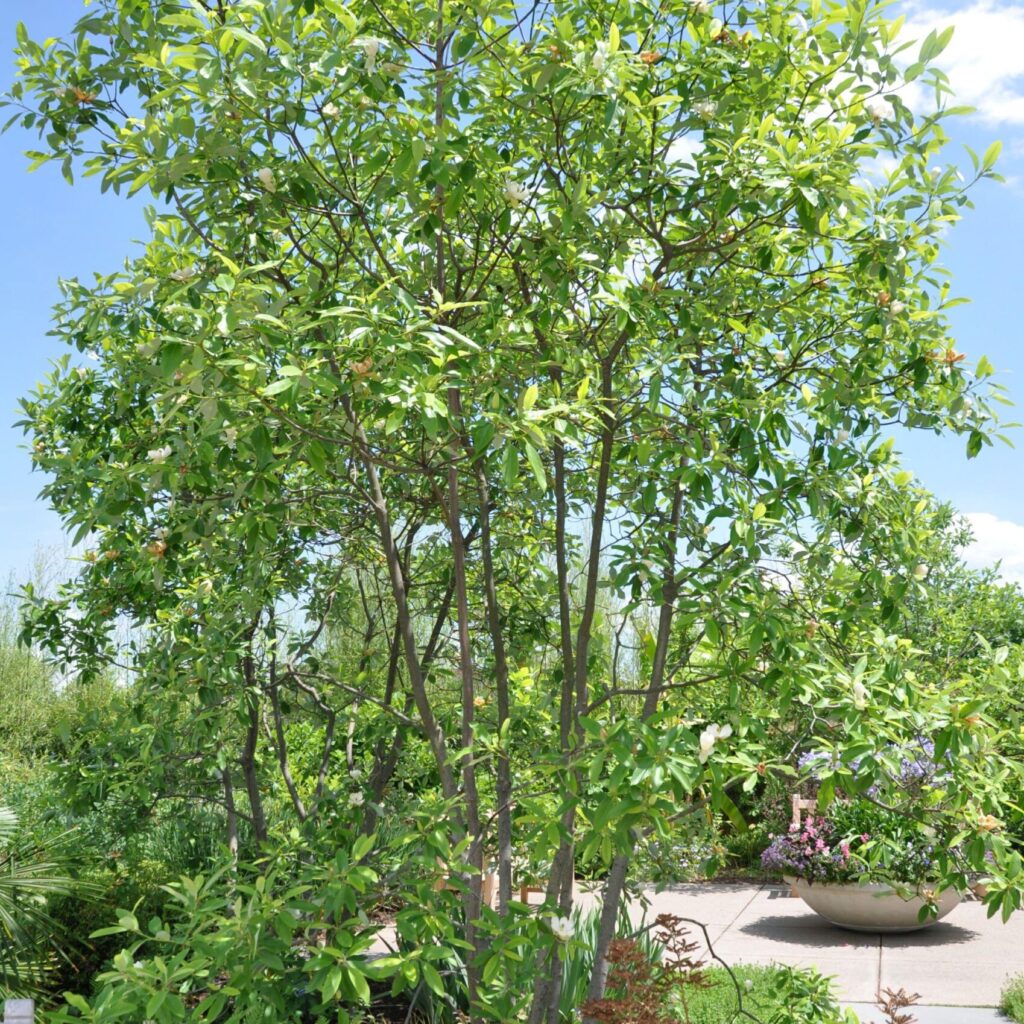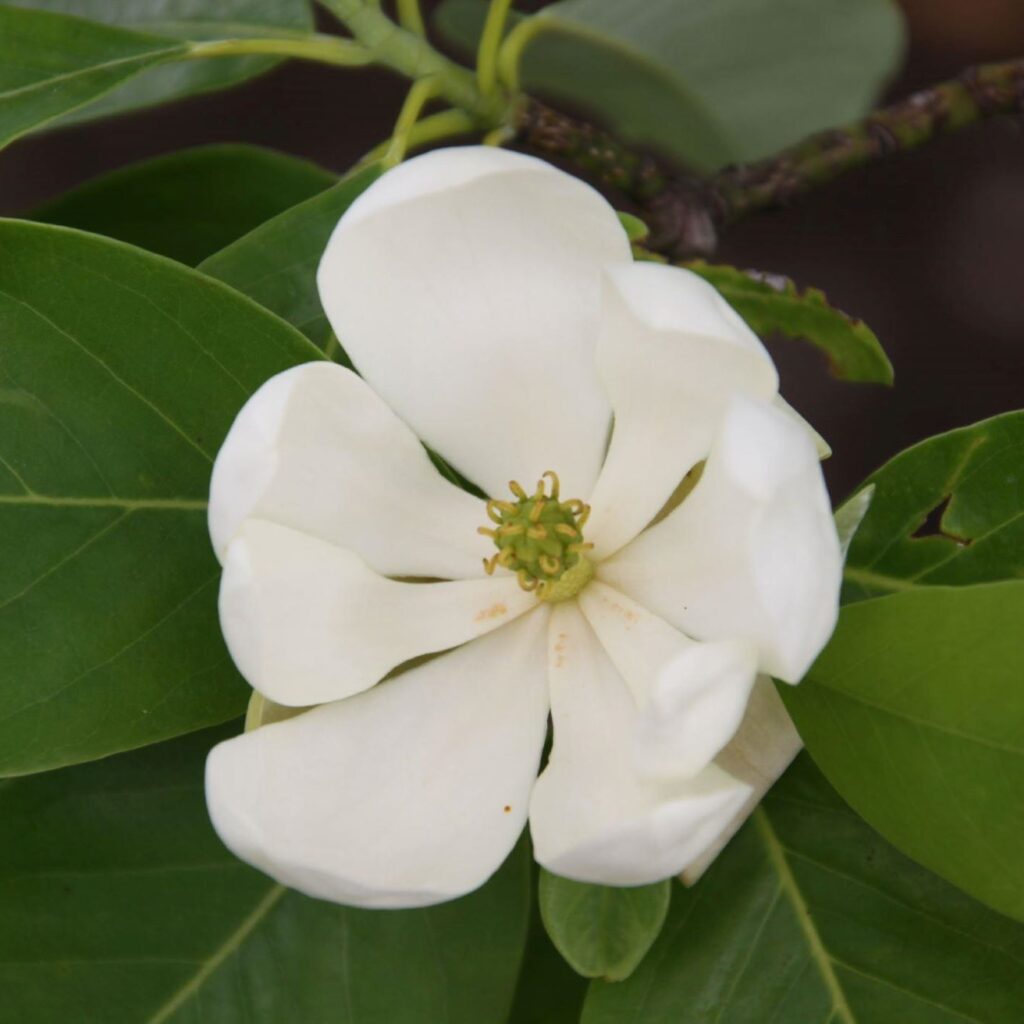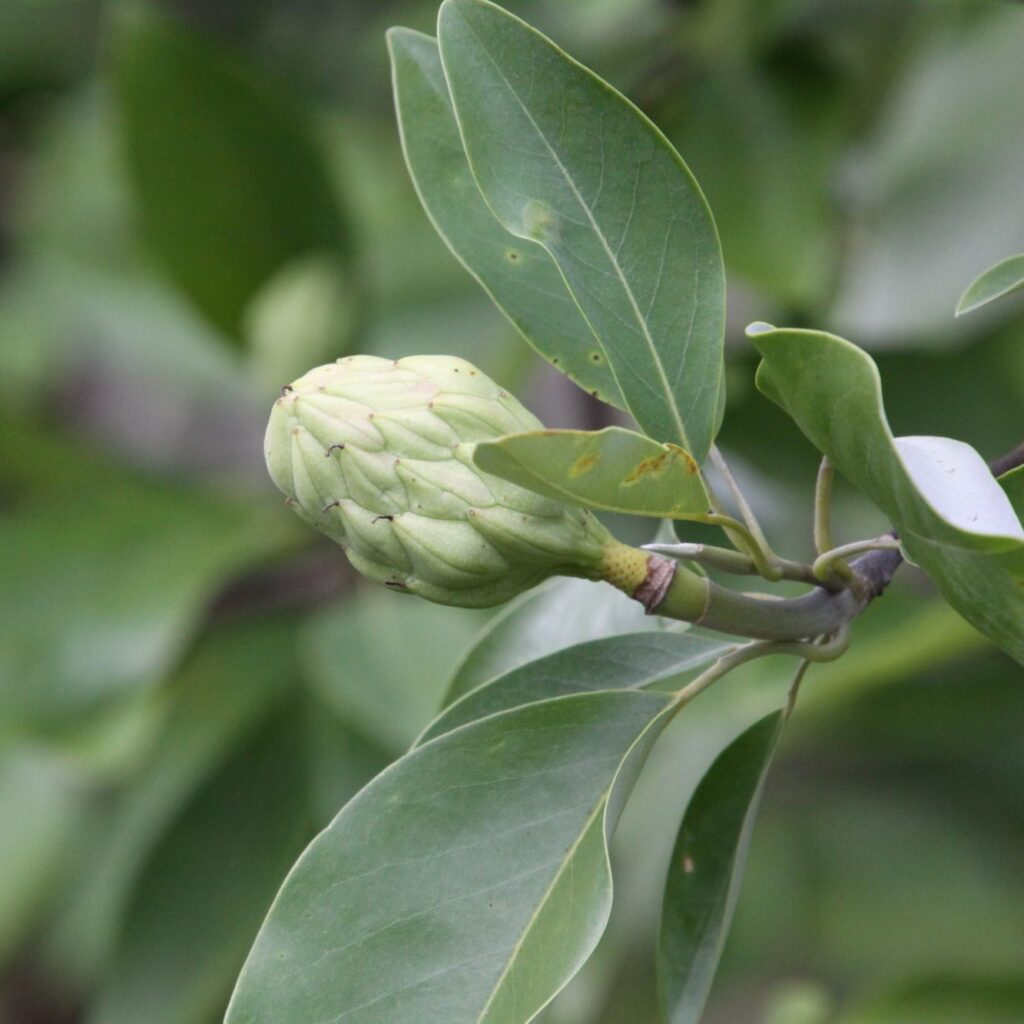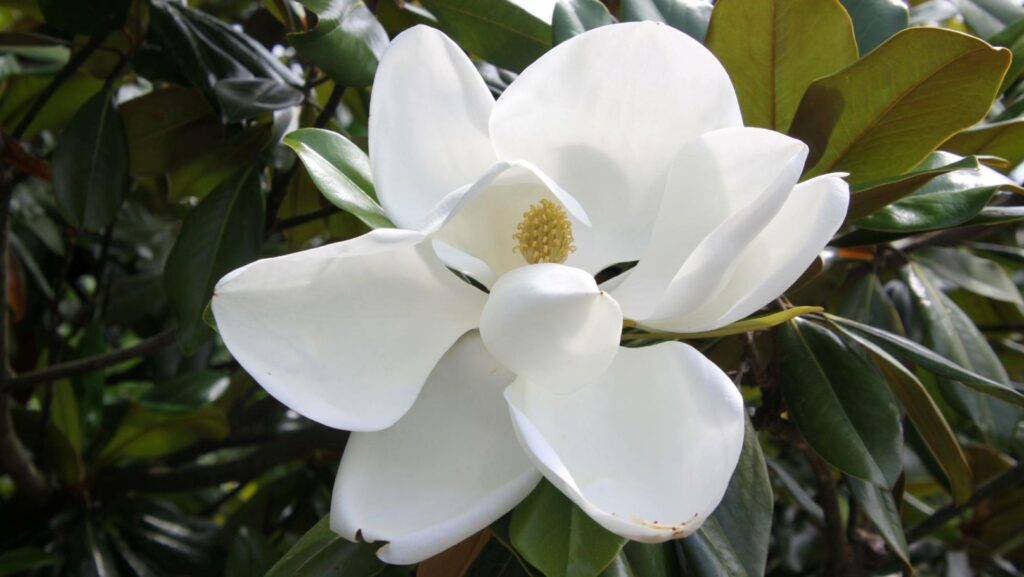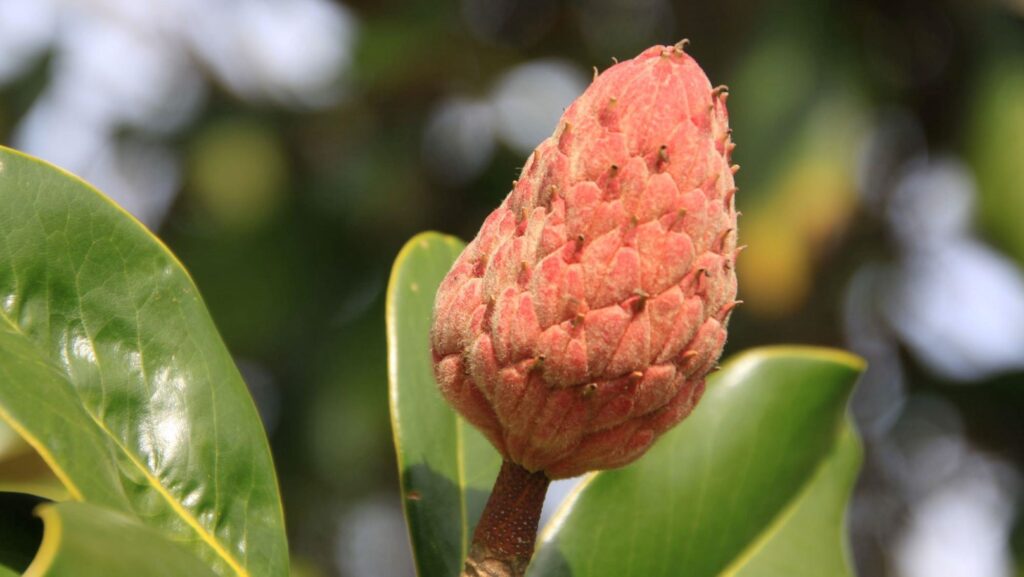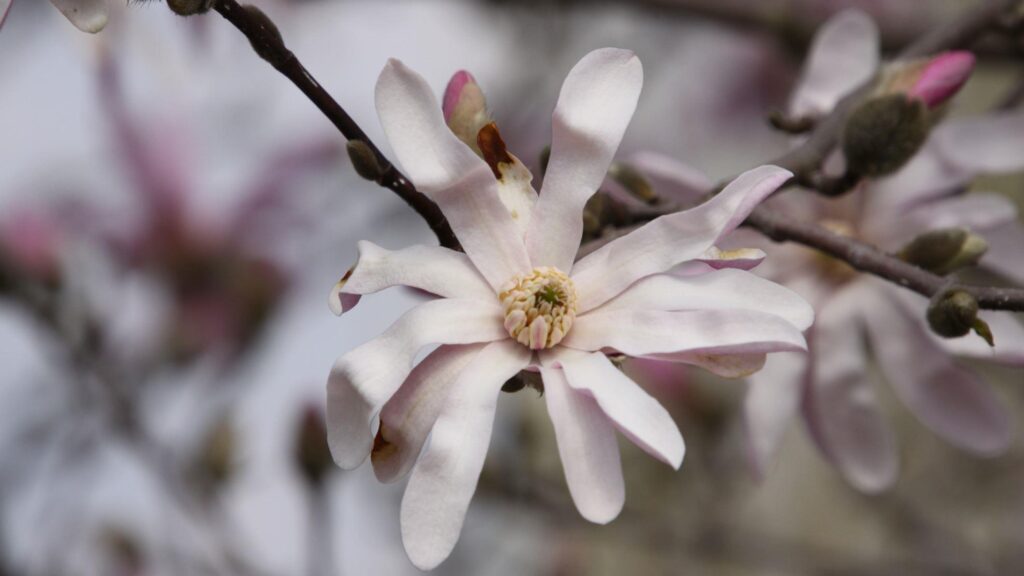
Deciduous magnolias are among the first few flowering trees of the spring, captivating visitors in the gardens here in Central PA. Some of the earliest blooms start opening before their foliage in March and April (depending on weather), in sync with some other favorites such as daffodils, tulips, and flowering cherries. Many of the later-blooming species and varieties start gracefully unfolding in May and June.
Magnolias are incredibly diverse, appearing in many forms, colors, and sizes, and they are actually the defining genus of an entire order of plants, the Magnoliales, whose members also include the pawpaw, tulip trees, and custard apples. Perhaps the most interesting fact about this group can be observed through their evolutionary history. Magnolia flowers are very old, existing around 95 million years ago during the Cretaceous period. This predates the evolution of many modern pollinators such as bees. So, magnolias evolved to be pollinated by older insects like beetles. Due to this, magnolia flowers have extra tough carpels (female flower parts) to resist damage from hungry beetle jaws looking for their protein-rich pollen. These carpels also look like stamens (male flower parts) in order to attract the beetles for longer periods of time, ensuring pollination. The flowers are also protogynous, which is an adaptation that increases the likelihood of cross-pollination. The flowers open first with female parts, then close and reopen with the male parts, ready to shed the pollen.
The Arboretum currently cultivates more than 30 individual specimens, representing 12 different species and varieties. We’ll feature a few below, organized by bloom season. Most of these trees can be found in the Marsh Meadow and Rose and Fragrance Garden, with a few sprinkled in the Oasis Garden and in the Pollinator and Bird Garden. Be sure to use our Arboretum Explorer Tool to assist you on your magnolia adventure out in the gardens.
Early Spring Bloomers (Late February to April, Depending on Zone)
Magnolia × loebneri ‘Leonard Messel’ (Loebner’s magnolia)
One of the earliest bloomers, this prolific hybrid produces star-shaped flowers that are pale pink to white and lightly scented. Cold-hardy and compact, it’s perfect as a focal point for smaller gardens and landscapes. The Loebner hybrid is a cross between Magnolia kobus and Magnolia stellata. The star-shaped blossoms of cultivar ‘Leonard Messel’ are soft purple-pink, fading to white at the center, creating a two-tone effect.
Mid-Spring Bloomers (Mid-April to May, Depending on Zone)
Magnolia ‘Yellow Bird’ (magnolia)
One of the yellow-blooming deciduous hybrid magnolias at the Arboretum, ‘Yellow Bird’ features cheery 3–4’’ tulip-like blooms, appearing later in the spring season after all dangers of frost have passed. This cultivar can stand up to about 40’ tall, prefers full sun, and is regarded as one of the best overall yellow-blooming magnolias in the trade.
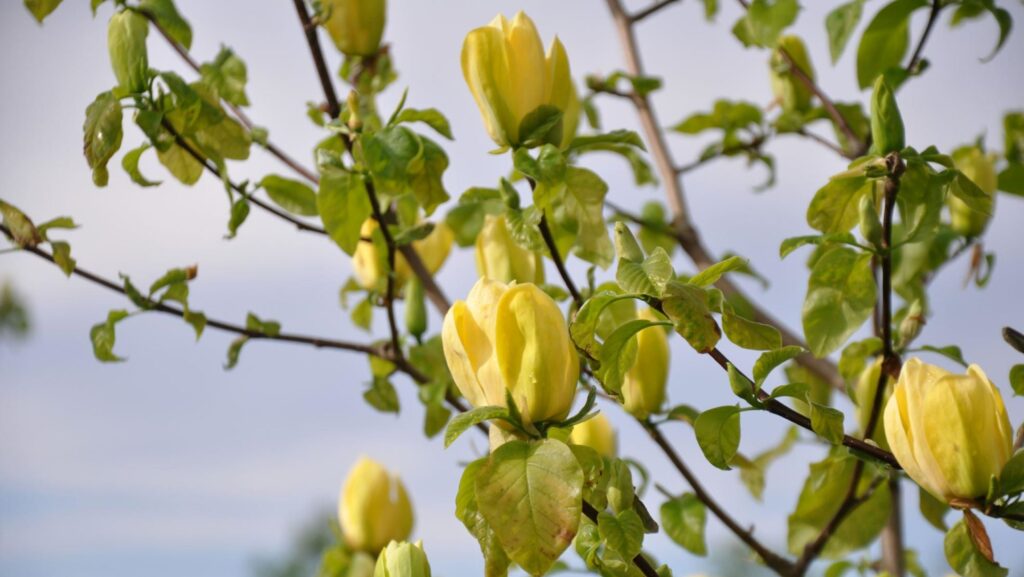
Magnolia ‘Ann’ (magnolia)
This smaller magnolia only stands about 10–15’ tall. It was bred for darker purple-reddish flowers that bloom in mid-spring (a bit later than other early spring magnolias) and can resist frost. There is also potential for reblooming in later summer.
Magnolia ‘Jane’ (magnolia)
Like Magnolia ‘Ann,’ this later-spring blooming cultivar belongs to the same (Little Girl) series and is also a manageable compact size with a round form. Deeper purple-reddish outer petals give way to white interiors.
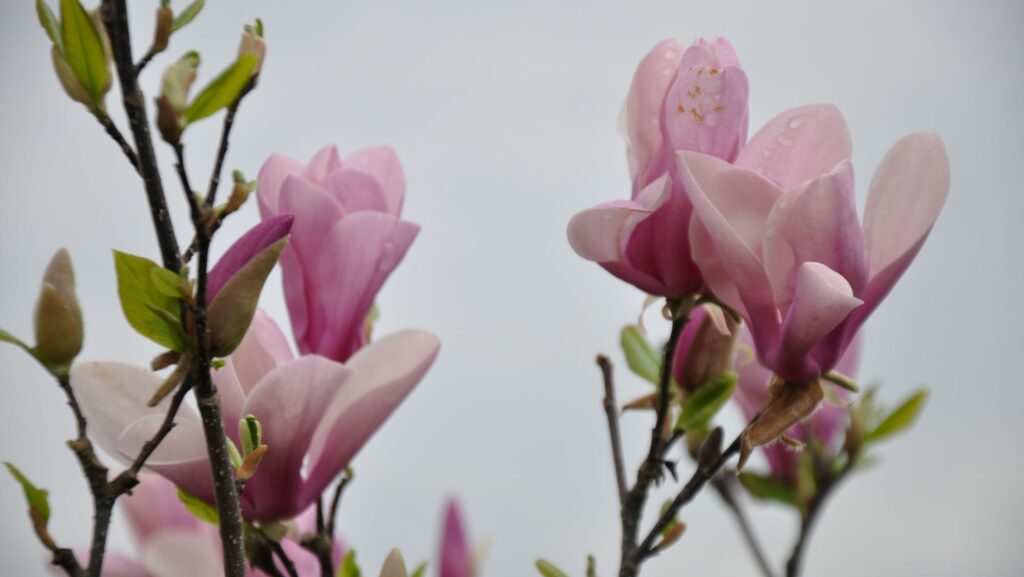
Magnolia tripetala (umbrella tree)
This southeastern U.S. native boasts large umbrella-like leaves (hence the common name) and uniquely-scented, sizeable (10’’ wide) creamy-white flowers in late spring. This species would fit in very nicely in a woodland-style garden.
Late Spring to Summer Bloomers (Mid-May into July, Depending on Zone)
Magnolia sieboldii (Chinese magnolia)
This later-spring to early-summer blooming magnolia may be lesser known to some, but it features unique and fragrant cup-shaped white flowers with vibrant red stamens that’ll be sure to catch your eye! This one also has the tendency to rebloom in later-summer. This species prefers cooler climates (USDA zones 6–8) and partial shade.
Magnolia virginiana (sweetbay magnolia)
The Arboretum is home to a number of these native semi-evergreen magnolias that flower in late spring to early summer, depending on the year. White citrus-scented flowers with silver-backed leaves provide contrast and a textural component. Bright red seeds produced by the cone-like fruit of this species are a favorite among many birds. These are a great option to plant near ponds and boggy areas as they prefer moist, acidic soils.
Magnolia acuminata (cucumber tree)
This shade-tolerant North America native can grow larger than most of the other magnolias mentioned — up to 80 feet tall! The common name, cucumber tree, originates from its immature fruit that looks like a small cucumber. Flowers are greenish-yellow and unsuspecting and bloom in late spring. This tree is subtle compared to many other magnolia favorites but can provide native value and serve as a structural component to larger naturalistic landscapes.
Magnolia grandiflora ‘Edith Bogue’ (southern magnolia)
‘Edith Bogue’ is a hardy southern magnolia cultivar known for its sweet fragrance and large, creamy-white blooms. Shiny, deep-green, leathery evergreen foliage beautifully contrasts with the blooms. This magnolia maintains a nice and tidy upright shape without much pruning and can get up to 40 to 60’ tall. This cultivar is especially prized for its winter hardiness and cold tolerance in USDA zones 6–9, which enables us to grow it here in the Arboretum (at least for now)!
Overall, magnolias are dependable and easy-care trees and are hardy in USDA zones 3–10. These trees thrive in full sun to partially shaded locations. A semi-sheltered spot is also beneficial to protect early blooms from the threat of late-season frost and wind, especially with the earlier-blooming varieties. These trees do best in a well-draining, slightly acidic to neutral soil. Trees can tolerate periods of drought but will require deeper watering during the first few years to maturity, avoiding compacted or overly wet soils. Magnolias generally require minimal pruning, but when necessary, it is best to remove dead or compromised branches in late summer or early fall. Fertilization in early spring is a good idea, but take care not to over-fertilize, as this may promote increased foliage over blooms.
If you’re looking for more information and resources on magnolias, a great page to check out is the Magnolia Society International. You can even find a comprehensive listing of all magnolia cultivar registrations!
